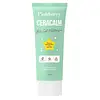What's inside
What's inside
 Key Ingredients
Key Ingredients

 Benefits
Benefits

 Concerns
Concerns

 Ingredients Side-by-side
Ingredients Side-by-side

Water
Skin ConditioningEthylhexyl Methoxycinnamate
UV AbsorberPolymethyl Methacrylate
Propanediol
Solvent4-Methylbenzylidene Camphor
UV AbsorberButyl Methoxydibenzoylmethane
UV AbsorberNiacinamide
SmoothingGlycerin
HumectantGlyceryl Stearate
EmollientCetyl Alcohol
EmollientTitanium Dioxide
Cosmetic ColorantCyclopentasiloxane
EmollientPolyacrylamide
Dimethicone
EmollientPEG-100 Stearate
Phenoxyethanol
PreservativeC13-14 Isoparaffin
EmollientChlorphenesin
AntimicrobialCaprylic/Capric Triglyceride
MaskingDimethicone Crosspolymer
Emulsion StabilisingLaureth-7
EmulsifyingCapryloyl Glycine
CleansingAllantoin
Skin ConditioningHexylene Glycol
EmulsifyingTocopheryl Acetate
AntioxidantCentella Asiatica Extract
CleansingHydrogenated Lecithin
EmulsifyingTetrasodium EDTA
Sarcosine
Skin ConditioningCholesterol
EmollientTriethoxycaprylylsilane
Dimethicone/Vinyl Dimethicone Crosspolymer
Skin ConditioningAluminum Hydroxide
EmollientButylene Glycol
HumectantParfum
MaskingCinnamomum Zeylanicum Bark Extract
AntimicrobialDimethiconol
EmollientActinidia Polygama Fruit Extract
Skin ConditioningWater, Ethylhexyl Methoxycinnamate, Polymethyl Methacrylate, Propanediol, 4-Methylbenzylidene Camphor, Butyl Methoxydibenzoylmethane, Niacinamide, Glycerin, Glyceryl Stearate, Cetyl Alcohol, Titanium Dioxide, Cyclopentasiloxane, Polyacrylamide, Dimethicone, PEG-100 Stearate, Phenoxyethanol, C13-14 Isoparaffin, Chlorphenesin, Caprylic/Capric Triglyceride, Dimethicone Crosspolymer, Laureth-7, Capryloyl Glycine, Allantoin, Hexylene Glycol, Tocopheryl Acetate, Centella Asiatica Extract, Hydrogenated Lecithin, Tetrasodium EDTA, Sarcosine, Cholesterol, Triethoxycaprylylsilane, Dimethicone/Vinyl Dimethicone Crosspolymer, Aluminum Hydroxide, Butylene Glycol, Parfum, Cinnamomum Zeylanicum Bark Extract, Dimethiconol, Actinidia Polygama Fruit Extract
Water
Skin ConditioningPanthenol
Skin ConditioningButylene Glycol
HumectantPropanediol
SolventGlycerin
HumectantPhenoxyethanol
PreservativeAmmonium Acryloyldimethyltaurate/Vp Copolymer
PEG-40
HumectantTetrasodium EDTA
Allantoin
Skin ConditioningCarbomer
Emulsion StabilisingEthylhexylglycerin
Skin ConditioningAminomethyl Propanol
BufferingVitis Vinifera Leaf Extract
Skin ConditioningPorphyridium Polysaccharide
AntioxidantCaprylic/Capric Triglyceride
MaskingDeoxyphytantriyl Palmitamide Mea
Skin ConditioningHydrogenated Lecithin
EmulsifyingCeramide NP
Skin ConditioningCholesterol
EmollientHamamelis Virginiana Extract
AntiseborrhoeicHydrolyzed Collagen
EmollientWater, Panthenol, Butylene Glycol, Propanediol, Glycerin, Phenoxyethanol, Ammonium Acryloyldimethyltaurate/Vp Copolymer, PEG-40, Tetrasodium EDTA, Allantoin, Carbomer, Ethylhexylglycerin, Aminomethyl Propanol, Vitis Vinifera Leaf Extract, Porphyridium Polysaccharide, Caprylic/Capric Triglyceride, Deoxyphytantriyl Palmitamide Mea, Hydrogenated Lecithin, Ceramide NP, Cholesterol, Hamamelis Virginiana Extract, Hydrolyzed Collagen
Ingredients Explained
These ingredients are found in both products.
Ingredients higher up in an ingredient list are typically present in a larger amount.
Allantoin is a soothing ingredient known for its protective and moisturizingg properties. Because of this, it is often added to products with strong active ingredients.
Studies show higher concentrations of this ingredient can promote wound healing.
Though it can be derived from the comfrey plant, allantoin is produced synthetically for cosmetic products to ensure purity.
Learn more about AllantoinButylene Glycol (or BG) is used within cosmetic products for a few different reasons:
Overall, Butylene Glycol is a safe and well-rounded ingredient that works well with other ingredients.
Though this ingredient works well with most skin types, some people with sensitive skin may experience a reaction such as allergic rashes, closed comedones, or itchiness.
Learn more about Butylene GlycolThis ingredient is an emollient, solvent, and texture enhancer. It is considered a skin-softener by helping the skin prevent moisture loss.
It helps thicken a product's formula and makes it easier to spread by dissolving clumping compounds.
Caprylic Triglyceride is made by combining glycerin with coconut oil, forming a clear liquid.
While there is an assumption Caprylic Triglyceride can clog pores due to it being derived from coconut oil, there is no research supporting this.
Learn more about Caprylic/Capric TriglycerideCholesterol is a class of organic molecules called lipids. It helps hydrate your skin and is essential to having a healthy skin barrier.
Our skin naturally contains cholesterol in the outermost layer. Besides cholesterol, it also contains ceramides and fatty acids. Cholesterol makes up about 1/4 of your skin's outer layer and barrier. Your skin barrier is responsible for keeping allergens and microbes out. Having a healthy skin barrier is also responsible for keeping your skin firm and plump.
Our bodies use cholestrol to create vitamin D, steroid hormones, and more.
Learn more about CholesterolGlycerin is already naturally found in your skin. It helps moisturize and protect your skin.
A study from 2016 found glycerin to be more effective as a humectant than AHAs and hyaluronic acid.
As a humectant, it helps the skin stay hydrated by pulling moisture to your skin. The low molecular weight of glycerin allows it to pull moisture into the deeper layers of your skin.
Hydrated skin improves your skin barrier; Your skin barrier helps protect against irritants and bacteria.
Glycerin has also been found to have antimicrobial and antiviral properties. Due to these properties, glycerin is often used in wound and burn treatments.
In cosmetics, glycerin is usually derived from plants such as soybean or palm. However, it can also be sourced from animals, such as tallow or animal fat.
This ingredient is organic, colorless, odorless, and non-toxic.
Glycerin is the name for this ingredient in American English. British English uses Glycerol/Glycerine.
Learn more about GlycerinHydrogenated Lecithin is created from the hydrogenation of lecithin (a group of phospholipids). Hydrogenation is a chemical reaction between hydrogen and another element.
This ingredient is an emollient and emulsifier. As an emollient, it helps soften skin by trapping moisture within. As an emulsifier, it prevents oil and water ingredients from separating.
Phenoxyethanol is a preservative that has germicide, antimicrobial, and aromatic properties. Studies show that phenoxyethanol can prevent microbial growth. By itself, it has a scent that is similar to that of a rose.
It's often used in formulations along with Caprylyl Glycol to preserve the shelf life of products.
Propanediol is an all-star ingredient. It softens, hydrates, and smooths the skin.
It’s often used to:
Propanediol is not likely to cause sensitivity and considered safe to use. It is derived from corn or petroleum with a clear color and no scent.
Learn more about PropanediolTetrasodium EDTA is the salt formed from neutralizing ethylenediamine tetraacetic acid with sodium hydroxide. It is a chelating agent and used to prevent metal ions from binding to other ingredients. This helps keep the product and ingredients stable.
Tetrasodium EDTA comes as a white solid and is soluble in water.
Water. It's the most common cosmetic ingredient of all. You'll usually see it at the top of ingredient lists, meaning that it makes up the largest part of the product.
So why is it so popular? Water most often acts as a solvent - this means that it helps dissolve other ingredients into the formulation.
You'll also recognize water as that liquid we all need to stay alive. If you see this, drink a glass of water. Stay hydrated!
Learn more about Water